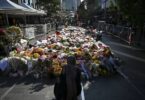Hamail Aziz
The concept of “Post-conflict peace building” was proposed in the 1992’s United Nations’ Agenda for Peace under the leadership of Boutras-Boutras Ghali. It aimed to strengthen and secure peace agreements between the conflict players, to demobilize the armed forces of the parties involved and further provide assistance in holding democratic elections in the post-conflict countries. Enhancing the aims, he further extended the peace operations involving political, economic and humanitarian spheres. Liberal peace building is nonetheless mainstream peace building with its theoretical framework lying in the liberal peace. The idea of peace building is thus transformed in theory and practice. Peace building is nonetheless both conceptually and practically dominated by the liberal peace paradigm. Oliver P. Richmond and Mac Ginty, the two critics of liberal peace paradigm argues that the modern-day peace building projects when localized are successful to certain extend. These critics have criticized the neo- colonial approach of West in peace build and have argued that the states must be empowered enough to analyze and solve domestic and local problems. They both have supported the idea of hybridity and termed it as an alternative approach of liberalism as the core ideas of liberal peace paradigm have failed to bring sustainable and durable in post-war societies.
They both have supported the idea of hybridity and termed it as an alternative approach of liberalism. Hybridity is the merger of local as well as liberal practices. The pro-liberal scholars argue that the approach however is practically impossible by viewing the distinctiveness and uniqueness of international conflicts. They reject the notion of hybridity and maintain that without any clear alternatives towards liberalism, the paradigm remains the most effective for the purpose of post- conflict peace building.
Though it is a decade old debate, some critics assert that it has achieved its pinnacle. Richmond and Ginty further claim that pro-local-hybrid intellectualism has been crushed and suppressed because of the “material power held by the mainstream”. They further question the “positionality of those who engage in the debate”.
Social anthropologist also resist the idea of liberal peace as their ethnographic studies shows the importance of understanding narratives from grass root level that can lead towards the development of more successful intervention strategies. According to the findings of these studies, many societies have spent years refining the intricate practices of peace building. Richmond argues that the peace building interventions personalized according to the local’s desires.
Richmond and Ginty is of the fact that local peace building is more people focused. They believe that peace building may not be the primary focus of liberal actors. Adding to it, they further argue that the liberal interventions strategies are developed in the areas that are ideologically and geographically remote from the illiberal states. These interventions strategies are not in the favor of local and thus rejected by them which they feel are more inclined towards analyzing their local problems and eventually solving without any foreign intervention. According to the critics the resource allotment of these intervention projects are relatively low. Thus the empowerment of local player is more rational choice that can lead towards long term peace.
Hybrid peace building as discussed above lay its emphasis on the significance of culture in power and that of the identity’s discourses. In post-colonial era of study it is highly debatable idea when talking about the formation of culture and identity. It reflects upon the struggles of local and natives against colonial rulers and domination. When reviewing the period of colonization, it points out that the natives were trapped in the shackles of different cultures; one of their own and the other one being the culture of colonial powers. The culture was frequently inflicted upon the natives and the natives were struggling. This resulted in the new form of culture known as hybrid culture; hence hybridity is seen as a positive force resisting a dominant ideology providing space for indigenous groups. Hybridity is somewhat considered to be the concept that is developed and advanced by the neocolonialist scholars. Further, if not analyzed critically; could help in continuing the asymmetrical power relations which are already in existence. Pieterse (1993) posits that the linkage between domination and power is important to see because they can be reproduced within the hybrid peace building or simply hybridity. It is hence crucial to analyze the domain of hybridity crucially for the positive outcomes and sustainable and durable peace. Hybridity in peace building; according to Mac Ginty (2012) is simply the declining of liberal peace building and its critique. Further, the approach is used in different words by different scholars for understanding hybridity in broader aspect and how it functions in post conflict peace building for example “hybrid peace ownership”, “hybrid peace governance” etc are such terms. Richmond (2010) sees hybridity as “local liberal”. For him hyrbrdity led to a contamination, modification and transgression of international and local domains creating a more comprehensive “local-liberal peace”. Contamination though have negative connotation attached to it; here the scholar haven’t intend to define hybridity in a negative way but to reflect the resistance of local actors in combating hegemony of liberal peace.
Nothing comes without pros and cons, so as the case of hybrid peace approach; though it comes with numerous strengths but has numerous weaknesses as well.. Hybridity peace though have proved to be effective in maintaining peace and order in case of Bougainville conflict but hybridity which is created by the international actors may not include “the local” and their representation might not be made compulsory in the post-conflict peace building process. As in the Afghanistan’s case warlords and elites were included in the government for the purpose of ensuring peace and stability in the state. The decision of including elites and warlords has destabilized the peace process since they may tend to use the resources for their own vested interests. Other such cases where the rebels and militias were included in governments can be found in Sierra Leone, Liberia and Guinea-Bissau. Further, it might have a tendency to idealize traditional norms and approaches of the local to the extent that it contradicts with the liberal democracy and universally recognized human rights demoralizing gender equality as most of the traditional customary institutions are held by men. This is problematic and challenging because young men and women are excluded from the decision-making process. Women’s role in the conflict resolution is most vulnerable. These differences between the local and liberal narratives may bring about outcomes that are unproductive and could derail the entire peace building process and reflect back into the violent conflict.
In essence, the liberal peace approach has been dominating the thought and practice of peace building process from a considerable period of time; however, it has received mixed reviews and unsatisfactory outcomes. Different scholars have criticized the liberal peace approach towards peace building. The incorporations of core ideas of liberal peace approach; like liberal market system, human rights, democratization and rule of law hasn’t bring stable and durable peace in an already failed or a failing state as it aims to bring in post-war states. This can be proved from the examples of the states like Bosnia, Haiti, Afghanistan and other such states which have gone through post-war situation. Analyzing and focusing on the liberal peace approach and peach building issues by many scholars have brethroted to new approach which has challenge the hegemony of liberal peace paradigm by incorporating local and creating space for the interaction between local and liberal. This new approach is known as hybrid peace or hybrid peace building. This new approach has its own strengths and weaknesses. It however has the potential to bring about long lasting and durable peace in the failed or weak states and maintain peace and security. Hybrid peace approach creates space for local traditions and norms to counter violence in peace building efforts. It can effectively gain legitimacy from the indigenous people instead of imposing liberal models of the west on the native people which may be considered as alien models by the local political elites and people of the conflict zone as well. Thirdly, it is an all inclusive approach and involves participation of the society at all level. It brings solutions through consensus not just by engaging political and local elites but all parties involved in the conflict for a win-win situation. Most importantly, it does not ignore the psychological and psychosocial aspects of the violent conflict that have on the people of the conflict zone and stresses upon its necessity. Furthermore, hybrid peace approach has the tendency to romanticize the local’s traditional approaches towards resolution that might contradict from the liberal peace and its standards of human right also undermining the gender equality and inclusiveness of women in decision-making process. Despite numerous strengths and weakness of the hybrid peace approach, it has expanded and prolonged the conceptual framework of western liberal paradigm in its comprehension and practice towards the inclusiveness of local, cultural, historical and societal aspects which were excluded in western models that were not adequate to safeguard peace and security in the post- conflict societies. Furthermore, this may be ahead to say that hybrid peace approach can bring long lasting and durable peace and can bring change in the practice of peace building but it would not be wrong to say that it does have the potential to contribute in the improvement of practice and approaches of peace building.
Hamail Aziz, recent graduate of National Defence University (NDU) from the Department of Peace and Conflict studies want to publish my article in The Frontier Post titled ‘Critique on Liberal Peace Paradigm: Various Post Positivist Theoretical Perspective’






